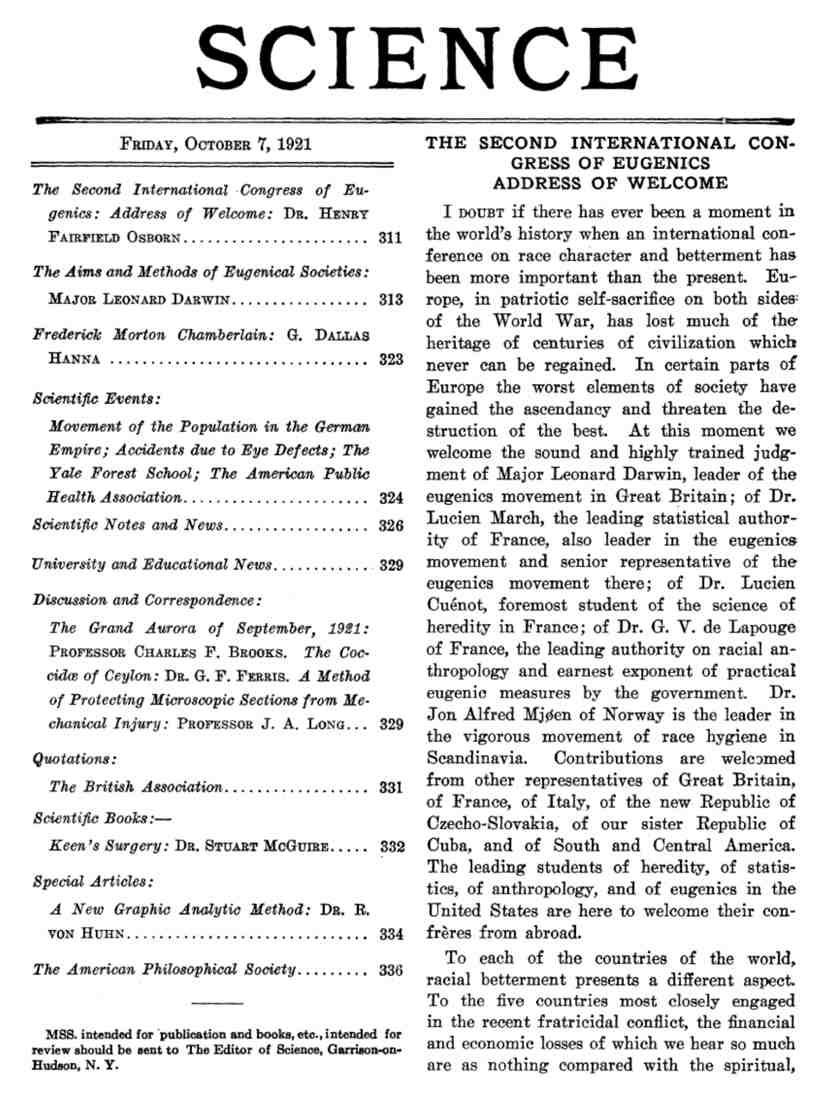A cautionary history of eugenics
By Adam Rutherford,
Science
| 09. 24. 2021
A century ago this week, 300 scientists, policy-makers, and campaigners gathered at the American Museum of Natural History in New York to discuss their work about heredity and eugenics—the political ideology designed to sculpt societies through biological methods of population control (the meeting was highlighted in Science a week later). The aims of eugenics were to nurture the propagation of people deemed “desirable” and to reduce the number of “undesirable” or “defective” people, primarily through enforced sterilization. Although recognized as toxic now, back then, eugenics enjoyed popular and bipartisan support and would grow to be one of the defining ideas of the 20th century.
The meeting had been coordinated by the Eugenics Record Office at Cold Spring Harbor Laboratory in New York, founded by the prominent eugenicist Charles Davenport, and by the office’s director, the equally zealous Harry Laughlin. Laughlin was the author of a “Model Eugenical Sterilization Law” to standardize state legislation to prevent people with “undesirable” characteristics from having babies. It would eventually be translated and adopted by the Third Reich. The conference treasurer was Madison Grant...
Related Articles
By Courtney Withers and Daryna Zadvirna, ABC News | 12.03.2025
Same-sex couples, single people, transgender and intersex West Australians will be able to access assisted reproductive technology (ART) and surrogacy, almost a decade after reforms were first promised.
The landmark legislation, which removes the requirement for people to demonstrate medical...
By Rachel Hall, The Guardian | 11.20.2025
Couples are needlessly going through IVF because male infertility is under-researched, with the NHS too often failing to diagnose treatable causes, leading experts have said.
Poor understanding among GPs and a lack of specialists and NHS testing means male infertility...
By Grace Won, KQED [with CGS' Katie Hasson] | 12.02.2025
In the U.S., it’s illegal to edit genes in human embryos with the intention of creating a genetically engineered baby. But according to the Wall Street Journal, Bay Area startups are focused on just that. It wouldn’t be the first...
Several recent Biopolitical Times posts (1, 2, 3, 4) have called attention to the alarmingly rapid commercialization of “designer baby” technologies: polygenic embryo screening (especially its use to purportedly screen for traits like intelligence), in vitro gametogenesis (lab-made eggs and sperm), and heritable genome editing (also termed embryo editing or reproductive gene editing). Those three, together with artificial wombs, have been dubbed the “Gattaca stack” by Brian Armstrong, CEO of the cryptocurrency company...




